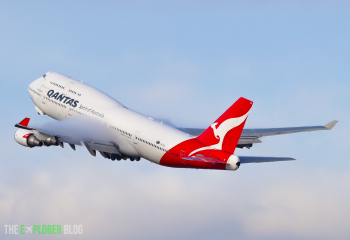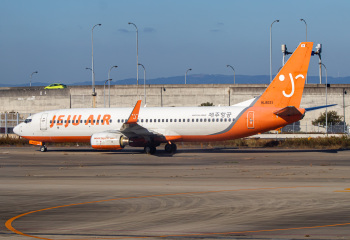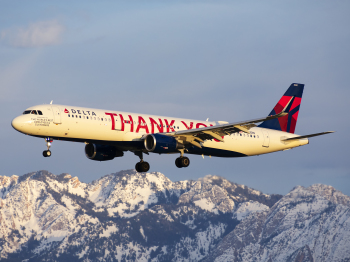It took significant time and effort, but after eight years of construction, Salt Lake City officially inaugurated an entirely new airport terminal system on September 15, 2020. Though the airport has been operational for nearly two years, the airport authority has continued to build out the full stages of the plan; the existing terminal is only half of what will eventually be completed by 2024. In this article I'll explain why the new terminal was built, what it means for the city, and my thoughts as a traveler through the airport.
Background:
Salt Lake City International Airport is a rather unique airport in the United States, all things considered. The airport is situated in an extremely ideal location just minutes from downtown, while also equidistant from Ogden and BYU. On top of this, the airport is only 45 minutes away from 10 world-class ski resorts. These factors, combined with the airport's status as a large connecting hub for Delta Airlines, has made the airport one of the busiest in the country—it ranked 20th in 2021 for passengers—despite the fact that the Salt Lake City metro area was ranked 46th in the US population rankings in 2021.
Salt Lake City's original concourse facilities dated back to 1960, when Terminal 1 was completed for $8 million dollars. Over time, up until the 1990s, concourses were built and old ones retrofitted, but as the 21st century progressed, airport authority officials determined that the existing infrastructure needed an overhaul. The airport had numerous capacity issues, as the airport was serving 26 million passengers in 2019 despite only being designed to carry 10 million. The new airport finally broke ground in 2014.

For six years the Salt Lake City International Airport was slowly transformed from an outdated, pier-style airport into a visually stunning, linear concourse airport—fully capable of handling new capacity and manifesting into its position as the gateway to Utah. By 2021, the old airport was fully demolished, and the new airport was up and running featuring two linear concourses, lableled the A and B concourses, with an underground walkway connecting the two.
The new airport has significant advantages over the old airport. First and foremost, visitors are welcomed into expansive, stunning concourses that allow for more efficient transfers. Bathrooms (all 300 feet apart), water bottle filling stations, and departure boards are abundant, as well as gate-side seating featuring outlets at every seat. While the airport only features one Delta Sky Club at the moment, the lounge is one of the largest Sky Clubs in the U.S. The airport is also home to 58 restaurants and bars, including several local favorites from nearby towns. The crown jewel, though, is the beautiful artwork in the "Plaza" part of the terminal just outside of security, where passengers are greeted by the gorgeous "Canyon" piece of wavy colors, representing the distinct hues and topography of the state.

While all those features are undoubtedly upgrades over the cramped and hard-to-navigate old airport, the new airport still has its flaws. While linear concourses allow for easy transfers, the Salt Lake City airport is one of the only airports that doesn't use trams to connect the concourses or parallel the concourses like the DTW train does. When the airport is fully complete in 2024, Concourse A will feature 50 gates in a concourse that spans a distance greater than the width of the entire old airport. Worse, airport signage indicates that just to cross the Tunnel between Concourse A and Concourse B, passengers should expect 7 minutes of travel time. That's not even accounting the time it takes to walk to one's gate in Concourse B.
Fortunately, the existing tunnel is only temporary. When the airport is fully complete, the airport will feature a $120 million dollar "Central Tunnel" featuring more distinct artwork, and will be centrally located in the "Plaza" area outside of security, meaning passengers won't have to walk to the far west side of Concourse A to get to the tunnel. Airport officials have also indicated that a tram connecting concourses is a possibility in the distant future, but likely only if a Concourse C north of the B Concourse is built. Many have complained about the walking times, though for those that need assistance, wheelchair accessibility is ample and electric carts are slated to become abundantly available in the near future.
Final Takeaways:
On a more personal note, I have been flying back and forth between California and Salt Lake City since the year I was born. I have seen both the old and the new airport, and have seen the airport's transformation. I must admit I was not sold on the idea that the airport needed a replacement. While the pier-style system of the old airport was certainly not efficient as the space between piers was narrow, passengers were far more spread out, eliminating some crowding. That said, I have now experienced the new airport four times, and found the security to be extraordinarily well-managed with dozens of agents waiting for ID check and people directing everyone to specific agents. The architecture is stunning visually and is far more engaging than the drab style of the old airport. At the end of the day the new airport is most certainly better than the old one, but at what cost? The new airport is costing just over $4 billion dollars, which, clearly, is incredibly expensive. Airports, however, tend to have significant economic impact from the jobs they provide and the way that they facilitate tourism. It remains to be seen what the economic impact of the new airport will be, but with additional capacity for Utah-bound and connecting passengers, the ball is in Salt Lake City's court.
Comments (3)
 Lee Doughty
This is an interesting article about the new SLC "airport." To a pilot an airport consists of runways, taxiways, ramps, FBOs, navaids, hangars, etc. And most airports have some sort of a terminal building. In other words, terminals are just one part of an airport. Years ago I had an argument with my brother in law about the MSP airport. He insisted that MSP was two airports. I assured him that it was the only airport there. Finally I realized that he considers a terminal building to be an airport. Apparently many other people believe the same thing.
Lee Doughty
This is an interesting article about the new SLC "airport." To a pilot an airport consists of runways, taxiways, ramps, FBOs, navaids, hangars, etc. And most airports have some sort of a terminal building. In other words, terminals are just one part of an airport. Years ago I had an argument with my brother in law about the MSP airport. He insisted that MSP was two airports. I assured him that it was the only airport there. Finally I realized that he considers a terminal building to be an airport. Apparently many other people believe the same thing.
 James Sloat
We traveled via SLC this week. As the the article said, the improvements are great. We have traveled between SLC and LAX numerous times throughout the past years and the only complaint that we and other people have is the tunnel between A and B Concourse. This trip our gate was B2 which is the end of B Concourse. We didn't mind the walk, however, we did hear many complaints from other passengers sitting near us.
James Sloat
We traveled via SLC this week. As the the article said, the improvements are great. We have traveled between SLC and LAX numerous times throughout the past years and the only complaint that we and other people have is the tunnel between A and B Concourse. This trip our gate was B2 which is the end of B Concourse. We didn't mind the walk, however, we did hear many complaints from other passengers sitting near us.
 Michael USVI
I've traveled through both the old and new airports.
The old was outdated by fairly efficient in most terms--Even TSA transit times.
The new airport is beautiful--and a fitting welcome to SLC.
However, I am mildly mobility challenged--normally I don't need assistance even in large airports (DEN's moving walkways and train are great, and DFW or MIA linear train work well)
The "7 minutes of travel time" are likely younger folks who have full use of their legs. It took me closer to 25 from gate to bag claim.
Spend the money and put in the bloody train.
Michael USVI
I've traveled through both the old and new airports.
The old was outdated by fairly efficient in most terms--Even TSA transit times.
The new airport is beautiful--and a fitting welcome to SLC.
However, I am mildly mobility challenged--normally I don't need assistance even in large airports (DEN's moving walkways and train are great, and DFW or MIA linear train work well)
The "7 minutes of travel time" are likely younger folks who have full use of their legs. It took me closer to 25 from gate to bag claim.
Spend the money and put in the bloody train.
Add Your Comment
SHARE
TAGS
INFORMATIONAL AirportsUtahInformationalSalt Lake CityDelta Air LinesDeltaRECENTLY PUBLISHED
 SpaceX Rocket Debris Forces Flight Delays for Qantas and SAA on Australia-South Africa Routes
Qantas and South African Airways (SAA) have faced flight delays and cancellations on their routes between Australia and South Africa due to falling debris from SpaceX rockets, Elon Musk's aerospace company.
NEWS
READ MORE »
SpaceX Rocket Debris Forces Flight Delays for Qantas and SAA on Australia-South Africa Routes
Qantas and South African Airways (SAA) have faced flight delays and cancellations on their routes between Australia and South Africa due to falling debris from SpaceX rockets, Elon Musk's aerospace company.
NEWS
READ MORE »
 Jeju Air Black Box Flight Recorders Failed Minutes Before South Korean Plane Crash
The black boxes of the Jeju Air Boeing 737-800 aircraft that crashed several weeks ago in Muan, South Korea, stopped working during the last four minutes of the flight. The crash killed 179 of the 181 people onboard. Without the flight data and cockpit voice recorders, investigators now face a significant setback as they lack crucial information that promised to shed light on the incident.
NEWS
READ MORE »
Jeju Air Black Box Flight Recorders Failed Minutes Before South Korean Plane Crash
The black boxes of the Jeju Air Boeing 737-800 aircraft that crashed several weeks ago in Muan, South Korea, stopped working during the last four minutes of the flight. The crash killed 179 of the 181 people onboard. Without the flight data and cockpit voice recorders, investigators now face a significant setback as they lack crucial information that promised to shed light on the incident.
NEWS
READ MORE »
 4-Hour Flight Airborne for Nearly 8 Hours Following "Stabilizer Issues"
A Boeing 737-800 registered to UT Air made an emergency landing on January 7th. The flight, UT Air Flight 881, reportedly experienced "stabilizer issues" mid-flight, causing the aircraft to divert to Moscow Vnukovo Airport (VKO) 6 hours and 50 minutes after takeoff. None of the 173 passengers onboard were injured.
NEWS
READ MORE »
4-Hour Flight Airborne for Nearly 8 Hours Following "Stabilizer Issues"
A Boeing 737-800 registered to UT Air made an emergency landing on January 7th. The flight, UT Air Flight 881, reportedly experienced "stabilizer issues" mid-flight, causing the aircraft to divert to Moscow Vnukovo Airport (VKO) 6 hours and 50 minutes after takeoff. None of the 173 passengers onboard were injured.
NEWS
READ MORE »




